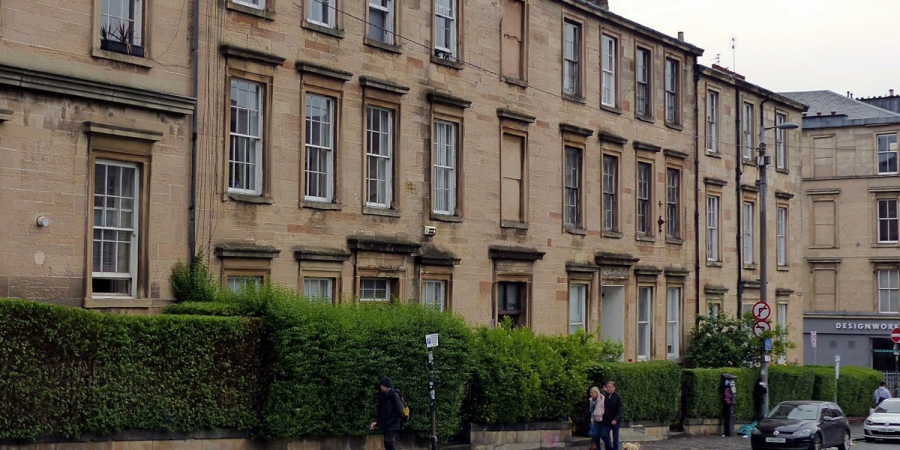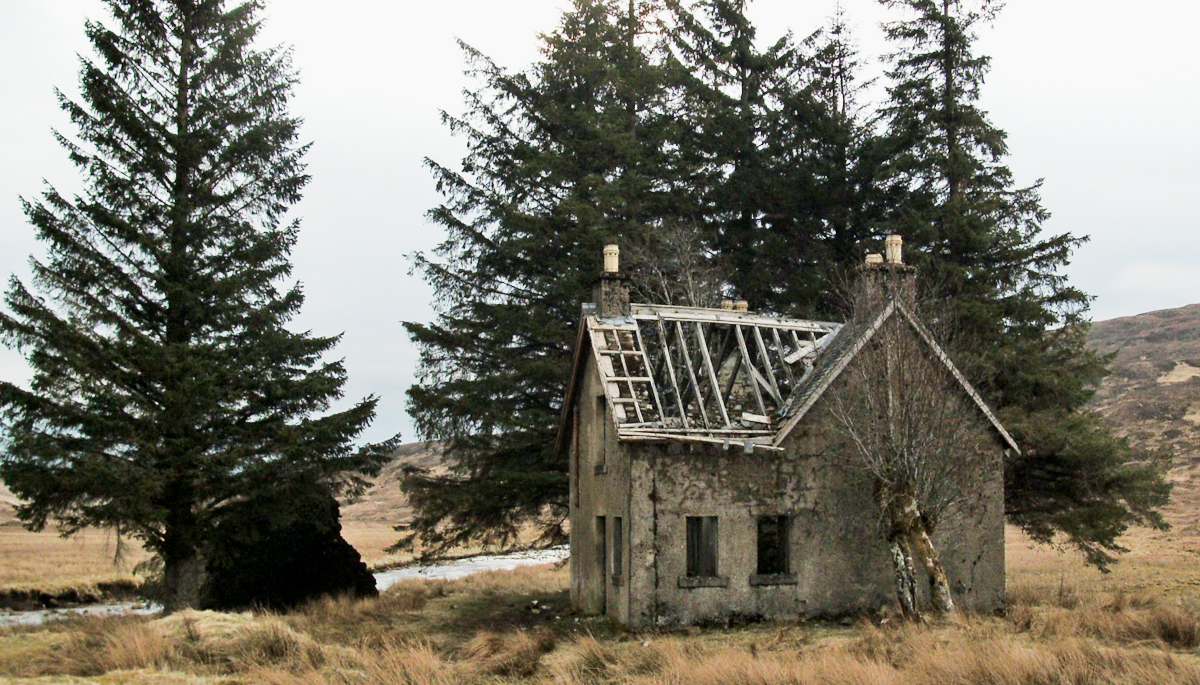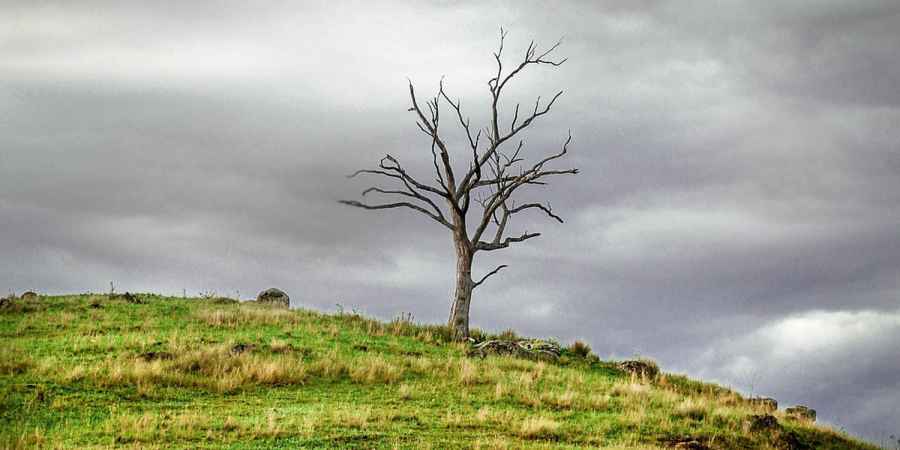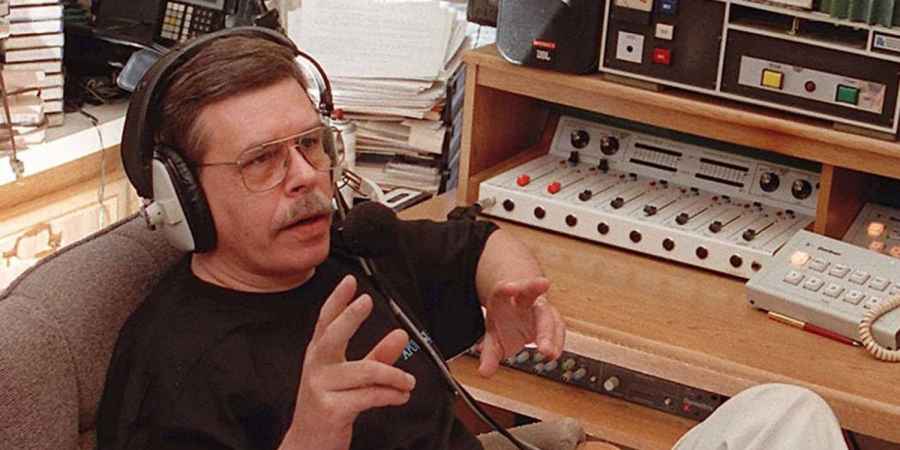Is Glasgow's Gibson Street The Poltergeist Equivalent Of The Bermuda Triangle?

Photo: Alan Murray-Rust

Photo: Alan Murray-Rust
This page is more than two years old and was last updated in February 2024.
Recorded ghostly activity on Gibson Street in the Woodside area of Glasgow's West End goes back as far as the 1950s, but the residential road seems to have been home to an unnatural concentration of paranormal potential over the years.
Gibson Street has recently been described as "the poltergeist equivalent of the Bermuda Triangle" by paranormal researcher and podcast host, Danny Robins. Like today, the street in the G12 postcode area was a popular place to stay for students studying at the nearby University of Glasgow.
In 1958 a group of American students recorded haunting voices and witnessed a radio repeatedly switching itself on immediately after being turned off, and objects moving of their own accord, this apparently included dancing eggs and a bread board being thrown off of the kitchen sideboard. They left the flat because of the phenomena that they started to experience.
A some what facetious article from the Glasgow Herald at the time doesn't give much detail, but does suggest some possible non-paranormal explanations for the reported incidents. You can see the full article below.
It's not known which building on Gibson Street the troubled American students lived at, but we do know that this isn't the only report of poltergeist activity on Gibson Street. The next traumatic experiences occurred behind the door of number 39 over a decade later.
Although the next set of ghostly phenomenon took place in 1970s, the events have only recently come to light thanks to Danny Robins' hit paranormal podcast, 'Uncanny'. In episode ten of the BBC Sounds series, Danny spoke to Phil Macneill, who had a terrifying experience as a young climber in 1973 at Luibeilt, a remote Highland bothy.

Photo: Sandy Stevenson
One possible explanation for the poltergeist activity that Phil witnessed at the remote cottage was the suicide of John McAlpine, a 40-year-old deerstalker or gamekeeper who lived in Luibeilt. His death was reported in the Aberdeen Weekly News on April 26, 1890. The report states that McAlpine went out for a walk in the morning in his usual health, but later in the day his wife found him hanging from a rope tied to a cross beam.
So did Phil encounter the spirit of John McAlpine ? Well, Phil believes that whatever it was that was haunting the bothy followed him all the way back to his apartment at 39 Gibson Street.
Phil told Danny in the podcast that the road always had a spooky reputation, but he wasn't convinced by any of the claims, that was until after his frightful night in the Highlands. Phil told Danny, "after Luibeilt, I never slept without the light on and there were features of Gibson Street which were beginning to attract my attention."
This included a secret passageway accessible via a small door in Phil's kitchen which led down into "some sort of sub basement." Phil continued, "I began to harbour the idea, perhaps there's something down there, after what happened to Luibeilt. Everything had taken on a different sort of feel, and maybe Gibson Street had as well."
Things continued to get strange for Phil at Gibson Street, he found a hidden trapdoor, as well as a cross made out of old newspapers laid on the floor under the carpet and even what he believed to be blood stains. A lightbulb also fell from its fitting and smashed at the same moment Phil made these other discoveries.
Parapsychologist, Evelyn Hollow, who made regular guest appearances on 'Uncanny' gave her opinion on the location in the podcast. She said, "perhaps it could be that Gibson Street itself is architecturally on top of something. It could be that you have a particular violent spirit that is there because of a crime that has occurred there or an act of violence, and it's now sort of rattling around latching on to people."
Danny said, "we've actually gone back through the records and we have unearth a lot of deaths on Gibson Street, and there's a murder and a suicide. So we now have this odd set of circumstances if we're looking at it from a paranormal point of view. Did something from Luibeilt follow Phil home or did something from Gibson Street follow him there?"
But this wasn't the end of the story. It was revealed in a follow-up episode of 'Uncanny' that some new information potentially ties Gibson Street and Luibeilt together. Danny explained, "we've learned that there was a one-year-old child living in 39 Gibson Street in 1851. A child who would have been 40 in 1890, the year that John McAlpine committed suicide in Luibeilt."
At this point you may be thinking this is just a coincidence, but there was still one jaw-dropping twist to come. Danny dramatically told listeners, "that child's name was John McAlpine."
This new information could suggest that Phil, the climber who had experienced life-changing paranormal activity at Luibeilt lived in the childhood home of John McAlpine, 39 Gibson Street. Furthermore, both Phil and John McAlpine visited Luibeilt, the place where McAlpine ultimately took his own life.
In a later episode of 'Uncanny', Danny told listeners that he'd been contacted by someone else who's had a strange experience at 39 Gibson Street, this same building.
Hugh wrote to Danny to tell him that while sharing the apartment on the infamous street his housemate's boyfriend was thrown across the bedroom. Hugh put this down to the flat's dodgy electrics and damp in the bedroom. Hugh's theory at the time was somehow in rolling up against the wall whilst in bed, the man created an earth and the electricity had flowed through him throwing him out of bed.
But Hugh admitted that he was never totally convinced by that theory, especially after listening to 'Uncanny' and learning about the history of the building.
These three claims of poltergeist activity on Gibson Street lead Danny to question the levels of paranormal activity in the area. He wondered, "could we have somehow here stumbled across a poltergeist equivalent of the Bermuda Triangle?"
He added, "we must come back to this." Suggesting that the case file on Gibson Street will be re-opened in a future episode of 'Uncanny', perhaps as part of the podcast's second series.
Ghosts In Gibson Street
Glasgow Herald, July 14 1958
Three American students, inexperienced, no doubt, in the life and peculiar aura of the Glasgow tenement, have given up their tenancy of a flat in Gibson Street, which, they are persuaded, is haunted. They have heard things which have convinced them that they shared their dwelling with a poltergeist, a mild, murmuring elemental, that sometimes turned off the radiogram and occasionally pushed egg boxes and bread boards off the kitchenette shelf. It is a wordless visitant that mumbles in two voices, but never so distinctly that the listener can distinguish what it is trying to say.
The disembodied voices, and the acoustics, are much more considerate in one of the neighbouring streets in Woodside. A colleague who lives there has been both instructed and entertained by his haunting in which the words and sense of the ghostly conversation are perfectly clear. These manifestations are also convenient because they have a set pattern and timetable. The voices, question ing and answering on a rising note, begin just before midnight, perhaps three times a week. Half an hour later they dwindle and fade. The listener may then, settle down to sleep undisturbed for five or six hours, and if he awakens, rested and sharp of hearing just before seven o'clock in the morning he can pick up the conversation where it left off. It ends always with a sharp thudding noise like the slamming of a front door.
Although co-operative and indigenous (for he speaks with two Glasgow voices), this ghost is a little tedious, having a monotonously limited repertoire. He appears to be interested only in petty finance, one of his voices defending and the other attacking in a recurring debate on domestic extravagance.
These conversational visitations, happily, are almost, totally free from psychokinetic phenomena, the only material manifestations being a slight trembling of ornaments which has been seen to coincide with the door-slamming sound that ends the seance. Our colleague hears these voices only when he is lying in his bed, and while he would not presume to account for them, either psychically or by prying upon his neighbours, he has noticed that a water pipe which serves the tenement from top to bottom lies inside the wall in a corner near the head of his bed.
It is reported that the neighbours of the extra-sensory perceptive American students in Gibson Street say that they themselves have never heard anything ghostly. This, however, does not mean that the noises are not there, or indeed that they have not heard them, but simply that the sounds, being without mystery, are not registered on their consciousness.
"I heard strange mumbling noises," said one of the departed tenants.
So did the other inhabitants of the building, but to them these meant, if anything, that there was a bus in the street, or a neighbour talking to his wife, or a cat in the close.
Cats, in Glasgow at least, do not stalk silently, but if they are in pursuit of one another pound through the closes with such a thunder of feet that anyone but a case-hardened Glaswegian could believe that the place was being invested by heavy cavalry.
Gibson Street is within vibrating distance of a grumbling complaining emanation that waxes and wanes through Hillhead, rising sometimes to a whine and declining to the hollow, senseless booming that is the call-sign of so many ghosts. But it holds no terror for our Hampshire colleague, who says that if you are alone in the house late on an otherwise quiet night, and if you listen closely with your ear to the floor, just before each whine starts, you can gear a distorted, sepulchral voice intoning:
"Mineragates-moovuprerr."
It is not difficult even for the stranger to identify the dripping of taps, and even that low has which burst pipes make, and for which the economical officers of the Water Department's detective staff so often listen with their, stethoscopes at the toby outside Rydderch Hael. But there are other sounds which only experience can recognise as not supernatural. One of these is a steady hypnotic hum, faint until you listen to it, but, like the tick of a clock, overwhelming once your ear has picked it up. It is peculiar to Glasgow closes, and begins only when the lamplighter has switched on the lamps on the landings. This groan, when punctuated by the clatter of mice, which, in Glasgow flats, walk on the linoleum in the night with heavy boots on can be, unnerving to the insomniac.
The Gibson Street poltergeist, we gather, achieved as finest effect by stopping a radiogram and then starting it again when one of the haunted Americans approached it.
This, however, is the sort of, thing we take for granted in Rydderch Hael, where one of the routine domestic duties is to go round the chambers switching out the lights which nobody has switched on. There the supernatural sounds are neither murmurers nor groans, but just clicks.
Further Reading
Dive into the world of the paranormal and unexplained with books by Higgypop creator and writer Steve Higgins.

Whispers From The Other Side
A guide to capturing and analysing EVPs for ghost hunters of all levels, covering techniques and theories.
Buy Now
Hidden, Forbidden & Off-Limits
A journey through Britain's underground spaces, from nuclear bunkers to secret wartime sites.
Buy NowMore Like This

Broken VeilApril 02, 2025
'Broken Veil' Podcast Explores A Haunted, Hidden Essex You Can’t Google

Robbie WilliamsFebruary 28, 2025
Robbie Williams Says UFO Came So Close, He Could Have Touched It

UfosFebruary 23, 2025
US Lawyer Claims The US Government Has Alien Spacecraft & Pilots

Art BellFebruary 22, 2025
Art Bell's 10 Most Memorable Callers On 'Coast To Coast AM'
 See More on Audible
See More on Audible
Comments
Want To Join The Conversation?
Sign in or create an account to leave a comment.
Sign In
Create Account
Account Settings
Be the first to comment.